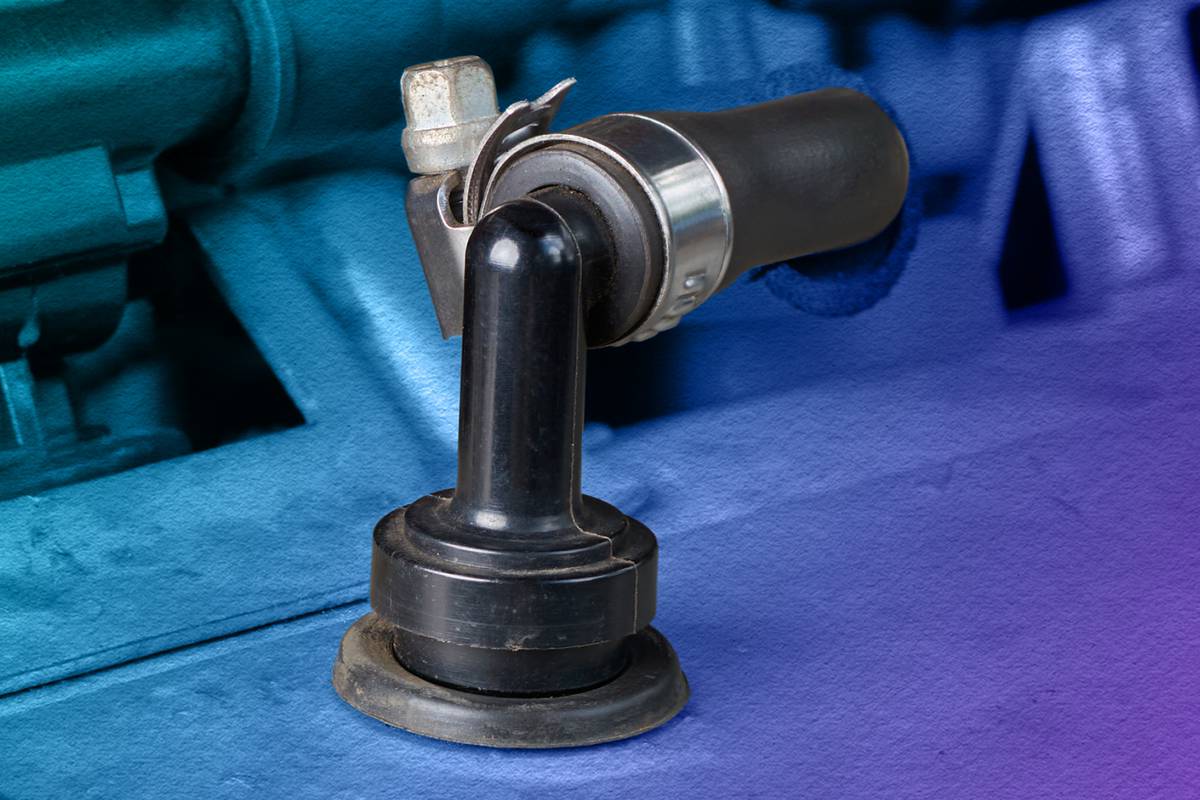When Should You Replace the PCV Valve?

Although some maintenance schedules include an interval for replacing the positive crankcase ventilation, or PCV, valve, others may not. In the latter case, a general recommendation is to replace the PCV valve every 30,000 to 50,000 miles. But either way, you might be able to save a little money and trouble by checking your PCV valve first to determine whether or not it’s working properly.
Related: How Much Oil Consumption Is ‘Normal’?
Note that some vehicles don’t have a PCV valve and use other methods to perform the same function. This may especially be the case with turbocharged or supercharged engines or those with direct fuel injection. Many such crankcase ventilation systems are somewhat more complicated and difficult to diagnose yourself. If you search online for “PCV valve for (year/make/model)” and don’t get any hits, your car probably doesn’t have one.
What Does a PCV Valve Do?
The PCV valve is a fairly simple device that primarily consists of a one-way check valve and a spring. It’s supposed to stop or limit the transfer of crankcase gases into the intake manifold under certain conditions and increase the amount under other conditions.
Due to the necessary tiny space between the piston rings and cylinder wall that allows the piston to slide up and down, combustion gases — which are under very high pressure — leak past the piston rings and into the engine’s crankcase, where the oil sits. Commonly known as “blowby,” these gases contaminate the oil and cause pressure in the crankcase that can force oil out through seals and gaskets, resulting in oil consumption and environmental pollution. To route these blowby gases back into the engine’s intake manifold to be burned during the normal combustion process, manufacturers began installing PCV systems in cars starting in the 1960s.
What Are the Symptoms of a Bad PCV Valve?
When the PCV valve fails, it usually gets stuck either open or closed.
If it’s stuck open, the PCV valve allows crankcase gases, which include oil, to be sucked into the intake manifold when they’re not supposed to be. This can result in rough idling, poor performance and oil consumption and may cause the Check Engine light to come on.
If the PCV valve is stuck closed, it can allow pressure to build up in the crankcase, which can force oil past seals and gaskets, resulting in leaks. It also leads to contamination of the oil, which causes sludge and increased wear.
More From Cars.com:
- Should I Worry About How Hot My Engine Is Running?
- What Is a Misfire and What Causes It?
- Why Is My Car Idling High?
- More Service Articles
- Find Your Next Car
How Do You Test a PCV Valve?
Although many PCV valves cost less than $15 and thus might be worth replacing as a preventative measure, it’s usually fairly simple to check yours to see if it’s still working. (As mentioned earlier, some engines don’t have a PCV valve, and what they use instead can be trickier to check.)
In most cases, the PCV valve will be plugged into a rubber grommet in the valve cover, but some might be elsewhere. If you don’t see it on the valve cover, an internet search for, “Where is the PCV valve on a year/make/model” should lead you to it.
Typically about the size of your thumb (some might be flatter like a milk-jug cap), the PCV valve will have a roughly 1-inch-diameter hose connected to it; that hose should be checked for cracks or leaks. Once the hose is disconnected, many PCV valves can just be pulled out, while others have to be screwed out.
Remove the PCV valve and shake it up and down vigorously. If you hear a rattling sound, it means the valve is freely moving back and forth and is likely OK. Even if that’s the case, though, it’s a good idea to go a step further by reattaching the PCV valve to its hose (but don’t plug it back into the valve cover) and starting the engine. Then, raise the engine speed to somewhat above idle speed and put your finger over the opening at the bottom of the valve to check for vacuum. Moving your finger on and off the hole should produce a clicking sound, which is the valve opening and closing. This checks more of the whole crankcase ventilation system than just shaking the valve.
Note that there is usually another hose that leads to the air-cleaner assembly, the air-intake hose or the throttle body; it is often also going to the valve cover (perhaps the other one on a V-type engine). This hose, which is called the breather tube, is an air inlet to the crankcase that supplies the air that is sucked out with the combustion gases through the PCV valve, and it should also be checked for cracks and leaks. Some breather tubes might connect to their own little filter, which should be replaced if dirty.
While there are many other engine problems that can mimic the symptoms of a bad PCV valve, few are as easy to check. So even if you don’t find any problems, at least you’ve eliminated the PCV system as a potential culprit.
Related Video:
Cars.com’s Editorial department is your source for automotive news and reviews. In line with Cars.com’s long-standing ethics policy, editors and reviewers don’t accept gifts or free trips from automakers. The Editorial department is independent of Cars.com’s advertising, sales and sponsored content departments.
Featured stories

15-Year Car Loans Aren’t a Thing, But Americans Are Getting More Comfortable With Long Loan Terms

2025 Kia Telluride Review: Rougher Roads Ahead



